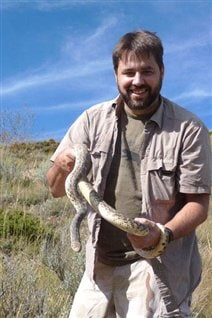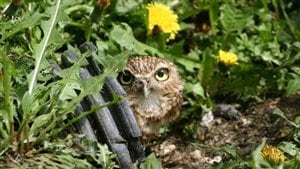It is a formidable and daunting task. The Royal Saskatchewan Museum is coordinating what is being called the largest bio-blitz ever conducted in the prairie province.
Ray Poulin, the Chief Curator at Royal Saskatchewan Museum and a specialist in vertebrate zoology, is leading the wildlife survey.
Listen
Saskatchewan, the middle prairie province, is not the biggest province in Canada in area, in fact its in seventh place, but it’s still huge at five times the size of England. To conduct this survey, the teams of researchers and students will start out initially in the south-west corner of the province.
They will simply collect data and specimens in their areas in an effort to catalogue the species that exist, and estimate their numbers.
Dr Poulin says the project will help to establish a baseline of the biodiversity in the province, something that really hasn’t been done before. He adds, therefore that ther really hasn’t been an accurate picture of the biodiversity in the province and how that has or may change over time.
“The Prairies are no longer that wild, native prairie space. There is a lot of crops grown and a lot of human activity that has changed the landscape,” says Dr Poulin. “For some species, that has been great. For other species, not so much. But until we are actually out there looking, we don’t know which direction it goes”
Saskatchewan also has a wide variety of environments from dry desert, to forest, to hills, wetlands, and of course vast plains.
The survey should also help determine which species are endangered and which are not, and which ones might be mis-labelled. In other words, a species might be listed as “endangered” when the survey might show ample populations, or the opposite.

In what is being called the largest wildlife survey ever done in Saskatchewan, researchers and students are preparing to cast a wide net across the southern part of the province to address the lack of knowledge regarding biodiversity and certain species.
“The Prairies are no longer that wild, native prairie space. There is a lot of crops grown and a lot of human activity that has changed the landscape,” Ray Poulin, chief curator of the Royal Saskatchewan Museum, said.
“For some species, that has been great. For other species, not so much. But until we are actually out there looking, we don’t know which direction it goes.”
The scientists and students will spend the summer collected data and specimens whieh will be analyzed over the winter in what is expected to be a year-long exercise. Although not confirmed, it is possible that the “bio-blitz” will continue to other areas of the province in future years, again with the purpose being to establish better and more complete data on the bio-diversity of the province.







For reasons beyond our control, and for an undetermined period of time, our comment section is now closed. However, our social networks remain open to your contributions.